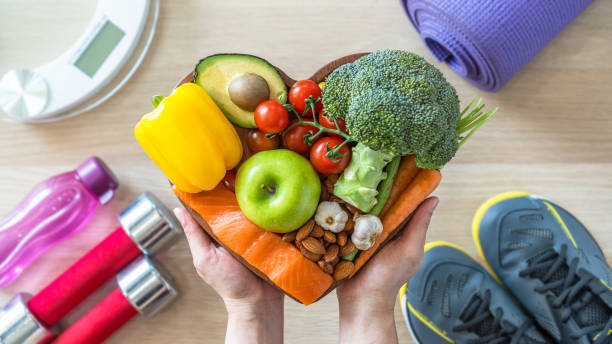Enhancing Longevity and Well-being Through Mindful Breathing Techniques
In contemporary society, characterized by its relentless pace and pervasive stressors, the pursuit of relaxation and tranquility often feels unattainable. However, achieving a state of relaxation is not merely desirable but essential for holistic well-being and longevity. This article explores the application of mindful breathing techniques – a cornerstone of stress reduction and health optimization – through the lens of established physiological and psychological principles. We will define key concepts before outlining fifteen practical techniques, integrating them within a framework of established theories on stress management and relaxation response.
Key Concepts: Mindful breathing, a core component of mindfulness-based interventions, centers on cultivating present moment awareness of the breath as an anchor for attention. This practice activates the parasympathetic nervous system, counteracting the physiological effects of the sympathetic nervous system (associated with the stress response) and promoting relaxation. This aligns with the concept of the relaxation response, a state of deep rest and physiological restoration. Furthermore, these techniques are underpinned by principles of biofeedback, where individuals learn to consciously influence their physiological responses through focused attention and behavioral adjustments. The application of these concepts reduces cortisol levels and enhances autonomic nervous system regulation, contributing to improved overall health and potentially extended lifespan.
Fifteen Mindful Breathing Techniques for Relaxation and Longevity
The 4-7-8 Breathing Technique:
This technique, rooted in pranayama practices, involves a specific ratio of inhalation (4 seconds), breath retention (7 seconds), and exhalation (8 seconds). This controlled breathing pattern stimulates the vagus nerve, slowing heart rate and inducing a calming effect. It's particularly useful for managing anxiety and promoting sleep.Box Breathing:
Employing a square pattern (inhale 4 seconds, hold 4 seconds, exhale 4 seconds, hold 4 seconds), this technique enhances respiratory regularity and rhythm. Its predictable nature helps to focus attention and reduce mental chatter, aligning with principles of cognitive behavioral therapy (CBT) in stress management.Pursed-Lip Breathing:
This technique, beneficial for individuals with respiratory conditions, involves slow, controlled exhalation through pursed lips. The prolonged exhalation reduces airway resistance and promotes relaxation by slowing the respiratory rate. This aligns with the principles of diaphragmatic breathing, optimizing oxygen uptake and carbon dioxide expulsion.Equal Breathing:
Maintaining an equal duration for inhalation and exhalation (e.g., 4 seconds each), this technique promotes balance within the autonomic nervous system. The symmetrical breathing pattern creates a sense of equilibrium, counteracting the dysregulation often associated with stress. This can be understood through the lens of physiological homeostasis.Diaphragmatic (Belly) Breathing:
Focusing on deep abdominal breathing, expanding the diaphragm, promotes relaxation by stimulating the vagus nerve and slowing respiratory rate. The visceral engagement enhances mindfulness and body awareness.Nadi Shodhana (Alternate Nostril Breathing):
This yogic breathing technique alternates inhalation and exhalation between the left and right nostrils. It is believed to balance energy flow within the body, potentially influencing autonomic nervous system function. Research suggests its efficacy in reducing anxiety and improving mood.Bhramari Pranayama (Humming Bee Breath):
Creating a humming sound during exhalation (mimicking a bee's buzz) is believed to calm the nervous system. The vibration produced is thought to stimulate specific cranial nerves, contributing to a state of relaxation.Ocean Breathing:
Mimicking the rhythm of ocean waves with inhalation and exhalation promotes a meditative state. The focus on external sensory input aids in diverting attention from internal stressors, in accordance with principles of distraction techniques for stress reduction.Visualization Breathing:
Combining breathwork with guided imagery, this technique engages the imagination to create a sense of calm. The mental imagery aids in emotional regulation, diverting attention away from stress-inducing thoughts and promoting a relaxation response.Breath Counting:
Simply counting each breath serves as a focal point, drawing attention away from ruminative thoughts. This technique is consistent with cognitive restructuring principles, gently redirecting attention to the present moment.Progressive Muscle Relaxation:
Combining breathwork with progressive muscle tension and release promotes deep relaxation. The systematic tensing and releasing of muscle groups reduces muscular tension and enhances body awareness.Guided Imagery Meditation:
Guided audio recordings or visualizations can be incorporated with breathing techniques to enhance the relaxation response. The auditory and visual stimuli facilitate deeper relaxation and promote a sense of detachment from stress.Sighing Breath:
A simple yet effective technique involving deep inhalation followed by a prolonged exhalation (a sigh), this helps to release pent-up tension and promotes emotional release.Morning Mindfulness Breathing:
Integrating mindful breathing into the daily morning routine can set a calming tone for the day. This aligns with the principles of establishing positive habits and promoting proactive stress management.Bedtime Breathing:
Practicing mindful breathing before sleep promotes relaxation and prepares the body for restful sleep. This addresses sleep hygiene and reduces the physiological manifestations of anxiety that can interfere with sleep.
Conclusions and Recommendations
Mindful breathing techniques, grounded in established principles of physiology and psychology, offer a powerful approach to stress management and enhancement of well-being. Consistent practice activates the relaxation response, reduces cortisol levels, and improves autonomic nervous system regulation, potentially contributing to improved cardiovascular health, enhanced longevity, and an increased sense of mental clarity and resilience. Incorporating these techniques into daily routines, integrating them with other relaxation strategies (e.g., yoga, meditation), and seeking guidance from qualified professionals (e.g., therapists, yoga instructors) can further enhance their efficacy. Further research could explore the long-term effects of these practices on various health outcomes, including immunological function and telomere length (a marker of cellular aging). The findings could potentially inform the development of more integrated and personalized interventions for stress reduction and health promotion.
Reader Pool:
What are the potential limitations and challenges associated with implementing these mindful breathing techniques in diverse populations and contexts, and how might these challenges be addressed?
```




No comments yet. Be the first to share your thoughts!